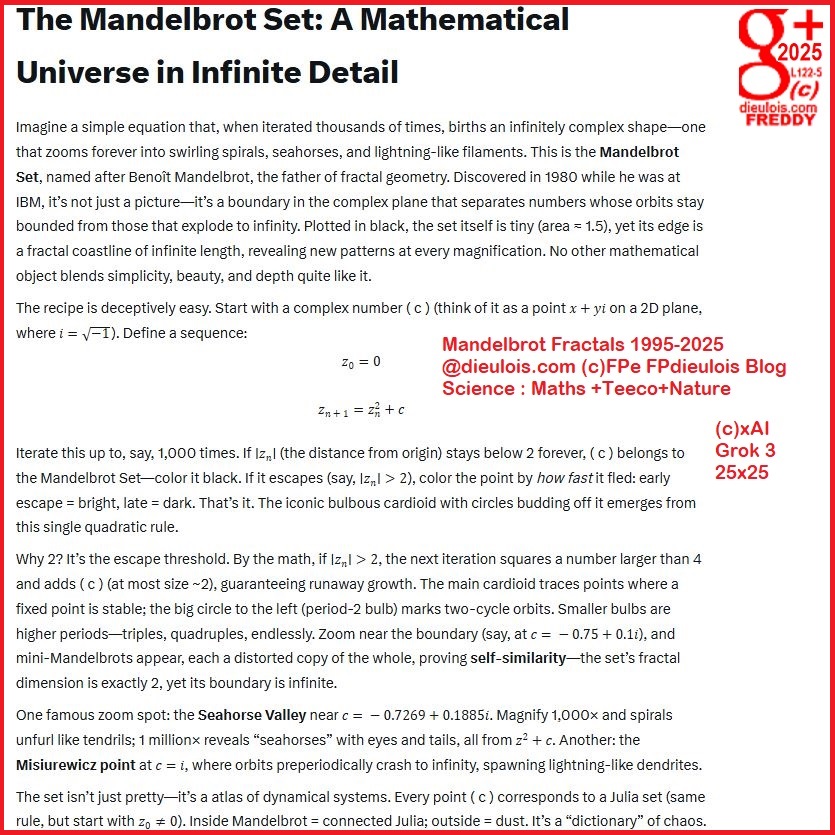by FPDieulois :: 2025-10-27
Zoom in on a fern frond and something magical unfolds: each leaflet mirrors the whole,
a miniature echo of the larger leaf, which itself repeats the plant’s branching pattern.
This self-similarity ( shapes that look the same at any scale ) is the hallmark of fractals,
mathematical sets discovered by Benoît Mandelbrot in the 1970s while studying cotton price fluctuations.
Unlike smooth Euclidean circles or lines, fractals boast fractional dimensions
and infinite detail, thriving in the wild where nature abhors straight edges.
From the jagged fjords of Norway to the delicate veins of a bracken fern, fractals reveal order within chaos,
bridging math and biology in patterns that grow, erode, and evolve without end.Take the humble fern, a living fractal blueprint.
Botanists model its growth with the L-system, a rewriting algorithm invented by Aristid Lindenmayer in 1968.
Start with an axiom like “A” (the stem). Apply rules: A ? B[+A][-A] (B grows, then splits into two angled branches with A at each tip).
Iterate: after five generations, a simple line explodes into a bushy frond.
The equation governing branch angles often uses trigonometry: new direction = old direction ± ?, where ? ˜ 25.7° mimics real ferns.
This isn’t mimicry—it’s emergence. The same rules generate the spiral phyllotaxis of pinecones or the Romanesco broccoli’s pyramidal florets,
each bump a smaller copy of the whole. Fractal dimension? For a fern, D ˜ 1.5—more than a line (D=1) but less than a plane (D=2),
quantifying its space-filling intricacy.
Now pan to the coast. Measure Britain’s shoreline with a 200 km ruler: ~2,400 km. Shrink to 50 km: ~2,800 km. At 1 km: over 3,400 km.
The length grows as your ruler shrinks—a paradox Mandelbrot resolved with the fractal coastline model.
The relationship follows a power law:


Beyond ferns and shores, fractals pulse in lungs (bronchial trees branch with D ˜ 2.7),
rivers (Mississippi’s tributaries follow Horton’s laws), and even heartbeats (healthy rhythms show fractal variability; disease flattens it).
Cloud edges, mountain skylines, lightning bolts—all obey scaling laws where small parts echo the whole.
Mandelbrot’s genius was seeing unity in irregularity: the same math behind a fern’s curl governs a galaxy’s spiral arms.
In a world of finite pixels and straight highways, fractals remind us nature thrives on recursion
growth that folds back on itself, infinitely.
Next time you trace a fern’s edge or walk a rugged beach, you’re not just seeing patterns.
You’re touching equations alive in the wild, where math doesn’t describe reality
it is reality, branching, eroding, and unfolding forever.

< B > My Personal Blog < B > List of all my Blog posts < B >
(c)FPe COPYRIGHT @FPDIEULOIS 2025